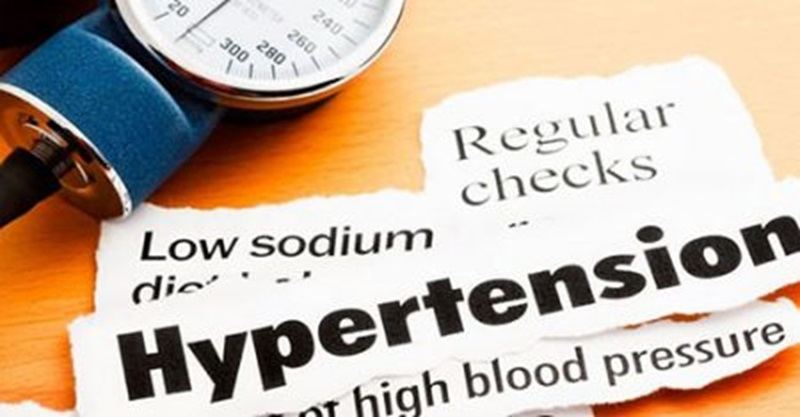Orthostatic hypotension (OH) is a well-known condition characterized by a significant drop in blood pressure when a person transitions from a lying or sitting position to a standing position. However, the term “reverse orthostatic hypotension” (ROH) is less commonly understood and discussed in medical literature and practice. This article aims to shed light on reverse orthostatic hypotension, exploring its definition, causes, symptoms, diagnosis, and potential treatment options.
What Is Reverse Orthostatic Hypotension?
Reverse orthostatic hypotension refers to a condition where an individual’s blood pressure increases abnormally upon lying down or sitting, rather than decreasing upon standing. This paradoxical response can be confusing and challenging to diagnose and manage, as it contrasts with the typical presentation of orthostatic hypotension.
SEE ALSO: 5 Typical Symptoms of Stress-Induced Hypertension
Causes of Reverse Orthostatic Hypotension
The exact causes of reverse orthostatic hypotension are not entirely understood, but several factors and underlying conditions may contribute to its development:
Autonomic Dysfunction: Disorders affecting the autonomic nervous system, such as multiple system atrophy (MSA) or Parkinson’s disease, can lead to abnormal blood pressure regulation, including ROH.
Medications: Certain medications, particularly those affecting blood pressure and heart rate, can cause reverse orthostatic hypotension as a side effect. These may include antihypertensives, antidepressants, and diuretics.
Endocrine Disorders: Conditions like pheochromocytoma, which involves a tumor in the adrenal gland that secretes excess catecholamines, can lead to fluctuations in blood pressure, including increases when lying down.
Cardiovascular Conditions: Heart failure or other cardiovascular abnormalities can impact blood pressure regulation, potentially contributing to ROH.
Volume Overload: Conditions leading to increased blood volume, such as chronic kidney disease or excessive fluid intake, can exacerbate blood pressure increases upon lying down.
Symptoms And Diagnosis of Reverse Orthostatic Hypotension
The symptoms of reverse orthostatic hypotension can vary but often include:
- Headache
- Dizziness or lightheadedness
- Palpitations
- Sweating
- Nausea
- Chest pain
- Shortness of breath
These symptoms typically occur when the individual is lying down or sitting, and they may subside upon standing.
Diagnosing reverse orthostatic hypotension involves a thorough evaluation of the patient’s medical history, symptoms, and medication use. Blood pressure measurements in different positions—lying down, sitting, and standing—are essential to identify abnormal increases when the patient is supine or seated. Additional diagnostic tests, such as blood tests, ECG, or autonomic function tests, may be conducted to identify underlying causes.
Managing And Treating Reverse Orthostatic Hypotension
Effective management of reverse orthostatic hypotension requires addressing the underlying cause, implementing lifestyle modifications, and, in some cases, using pharmacological interventions.
Lifestyle Modifications
Salt and Fluid Intake: Increasing salt and fluid intake can help regulate blood pressure by expanding blood volume.
Head Elevation: Elevating the head of the bed can reduce the blood pressure increase that occurs when lying flat.
Gradual Position Changes: Encouraging patients to change positions slowly can help mitigate sudden changes in blood pressure.
Avoiding Large Meals: Eating smaller, more frequent meals can prevent postprandial hypotension and reduce blood pressure fluctuations.
Compression Stockings: Wearing compression stockings can help reduce blood pooling in the legs and improve overall circulation.
Pharmacological Interventions
In cases where lifestyle modifications are insufficient, medications may be necessary. These can include:
Alpha Blockers: Medications like prazosin or doxazosin can help manage blood pressure by blocking the effects of adrenaline on blood vessels.
Beta Blockers: These medications reduce heart rate and the force of heart contractions, potentially helping to stabilize blood pressure.
Mineralocorticoid Receptor Antagonists: Drugs like spironolactone can help manage fluid retention and blood pressure.
Diuretics: In cases of volume overload, diuretics can help reduce fluid retention and blood pressure increases when lying down.
Monitoring and Follow-up
Regular monitoring and follow-up with a healthcare provider are essential for patients with reverse orthostatic hypotension. Blood pressure should be measured in different positions to ensure effective management and adjustment of treatment plans as needed. Patients should be educated about the importance of adhering to their treatment regimen and making necessary lifestyle changes.
Complications And Prognosis
If left untreated, reverse orthostatic hypotension can lead to several complications, including an increased risk of cardiovascular events, chronic kidney disease, and decreased quality of life due to persistent symptoms.
However, with appropriate management and treatment, many patients can achieve significant symptom relief and improved blood pressure control.
Conclusion
Reverse orthostatic hypotension is a complex and less commonly recognized condition that involves an abnormal increase in blood pressure when lying down or sitting. Understanding the underlying causes, recognizing the symptoms, and implementing appropriate management strategies are crucial for improving patient outcomes. With a combination of lifestyle modifications, pharmacological interventions, and regular monitoring, patients with reverse orthostatic hypotension can achieve better blood pressure control and a higher quality of life.

